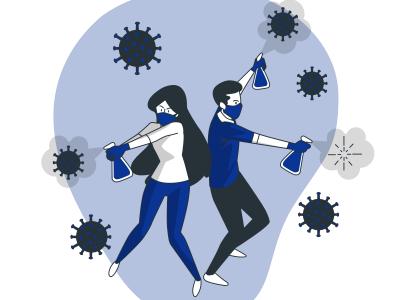Machine Learning

Data augmentation is commonly used to increase the size and diversity of the datasets in machine learning. It is of particular importance to evaluate the robustness of the existing machine learning methods. With progress in geometrical and 3D machine learning, many methods exist to augment a 3D object, from the generation of random orientations to exploring different perspectives of an object. In high-precision applications, the machine learning model must be robust with respect to the small perturbations of the input object.
- Categories:
 246 Views
246 ViewsThe dataset contains UAV imagery and fracture interpretation of rock outcrops acquired in Praia das Conchas, Cabo Frio, Rio de Janeiro, Brazil. Along with georeferenced .geotiff images, the dataset contains filtered 500 x 500 .png tiles containing only scenes with fracture data, along with .png binary masks for semantic segmentation and original georeferenced shapefile annotations. This data can be useful for segmentation and extraction of geological structures from UAV imagery, for evaluating computer vision methodologies or machine learning techniques.
- Categories:
 576 Views
576 Views
Datasets for image and video aesthetics
1. Video Dataset : 107 videos
This dataset has videos that can be framed into images.
Color contrast,Depth of Field[DoF],Rule of Third[RoT] attributes
that affect aesthetics can be extracted from the video datasets.
2.Slow videos and Fast videos can be assessed for motion
affecting aesthetics
- Categories:
 291 Views
291 ViewsPlease cite the following paper when using this dataset:
N. Thakur, "Twitter Big Data as a Resource for Exoskeleton Research: A Large-Scale Dataset of about 140,000 Tweets from 2017–2022 and 100 Research Questions", Journal of Analytics, Volume 1, Issue 2, 2022, pp. 72-97, DOI: https://doi.org/10.3390/analytics1020007
Abstract
- Categories:
 2803 Views
2803 ViewsThe Firearm Recoil Dataset was collected utilizing a wrist worn accelerometer to record the recoil generated from one subject’s use of 15 different firearms of the Handgun, Rifle and Shotgun class. The type of the firearm based on its ability to auto-load or not is also denoted.
- Categories:
 924 Views
924 Views
A synthetic signal dataset of 12 different modulations (including PSK, QPSK, 8PSK, QFSK, 8FSK, 16APSK, 16QAM, 64QAM, 4PAM, LFM, DSB-SC, and SSBSC) with different DOAs (discrete angles ranging from -60° to 60° with the step size of 1°) is generated using MATLAB 2021a. Regarding the signal model configuration for the data generation, we specify a uniform linear antenna array of M = 5 elements to acquire incoming signals having N = 1024 envelope complex samples, thus conducting an I/Q data array of size 1024 × 2 × 5.
- Categories:
 3445 Views
3445 Views
We elaborate on the dataset collected from our testbed developed at Washington University in St. Louis, to perform real-world IIoT operations, carrying out attacks that are more prelevant against IIoT systems. This dataset is to be utilized in the research of AI/ML based security solutions to tackle the intrusion problem.
- Categories:
 3168 Views
3168 Views
The credit risk evaluation data generated by a commercial bank’s personal consumption loans.
- Categories:
 4304 Views
4304 Views



